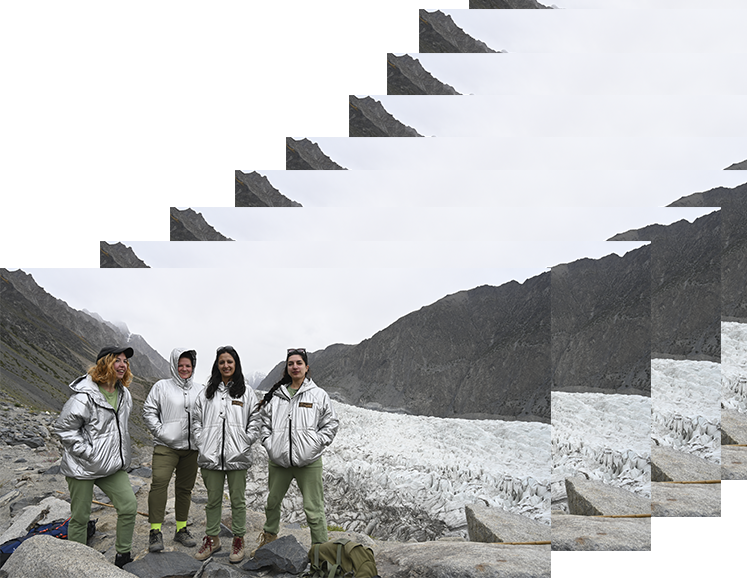

Pak Khawateen Painting Club researches the history and politics of
water bodies, flow of water, fluidity, bodies blocking water and
bodies moving along water. Complex irrigation engineering projects
introduced and conceived by the colonial British powers for enhancing
agricultural produce reshaped the landscape and abetted feudalism and
classism. The Club has previously followed six dams, which were either
built, being built or to be built. Each dam is a colossal body that
blocks water for the lower riparian communities that have indigenous
practices and agricultural lands that relied on the free flow. During
the second expedition the Club witnessed the effects of dams on the
people living at the tail end of the irrigation system. We followed
the Indus River from the northernmost Jinnah Barrage, down to the
south till the delta. Going from barrage to barrage, each of the seven
barrages although contribute to agriculture but also visually change
the landscape making it either more green or more desert-like. As we
moved south, terrain around barrages became more saline, and unconducive
to growing food.
On our third expedition, we invited another collective Lumens Studios, UK,
and led an all-female expedition. Previous expeditions had been studying
ambitious man-made engineering structures to control water but this
expedition went to some of the largest glaciers which are water reservoirs
and are continuously shifting and changing shape. The glaciers are also a
water source for rivers in south Asia, and are a part of the ‘Third Pole’,
one of the largest ice reserves in the world. The collectives went to four
of the glaciers in Hunza district and also into towns which live next to
them and are directly affected by glacial lake outbursts and rely on them
for water source. Drawing from the work of James C Scott, the mountains
especially from Cambodia to Afghanistan is a belt called Zomia, a place
for refuge from repressive states. These communities migrated to the
mountains to remain stateless and not fall into the trap of being
indentured slaves to produce and toil on the lands of agrarian states.
While the plains are sites for barrages and dams, and have also been
agrarian societies that relied on large populations and slavery to produce
food; the mountains were the opposite and housed small egalitarian
communities who were runaways.
Our project aims to show the precarity and beauty of living with large
natural formations such as glaciers. While these mountains are no longer
spaces of refuge, they have developed into touristic towns and brought
exponential wealth with the price of climate change and global warming.
The works were produced during fieldwork, in the form of journals, videos,
sounds, photography and some were later produced in the studio, such as
paintings and drawings.
This project is a part of Pakistan-UK New Perspectives 2022 programme
launched to celebrate Pakistan’s 75th anniversary of Independence in 2022.
The programme features projects addressing shared global challenges
including but not limited to digital innovation, environmental
sustainability, gender equality, diversity and inclusion principles, and
empowering young leaders of the future.
Find out more: britishcouncil.pk/new-perspectives
#PKUKCelebrating75
We would like to thank the British Council for their support and Asma
Haider and the staff at Mountain Story Resort Hunza for all their kindness
and hospitality.